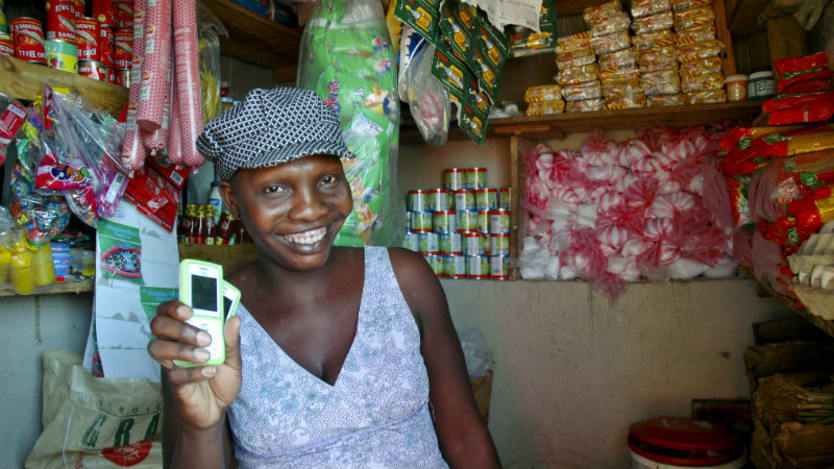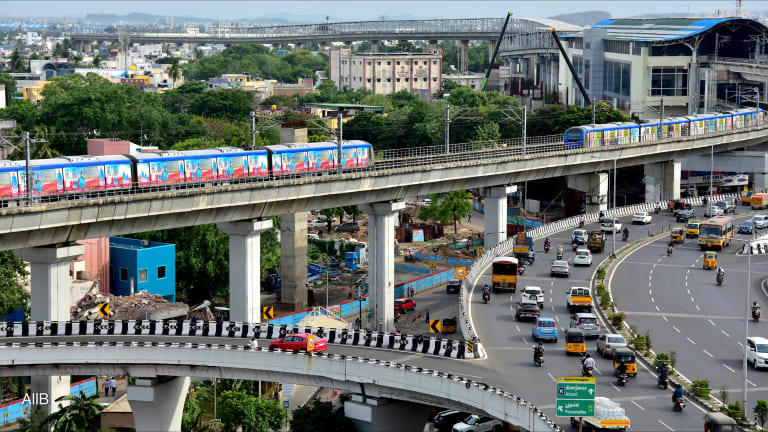
The United Nation’s 2030 Agenda for Sustainable Development is clear that collaboration is key to eradicating global poverty. The list of agents it calls upon to work together is daunting, including governments, international institutions, local authorities, indigenous peoples, civil society and business. In short, it wants “all people” to play a part. But how?
Joined-up approaches have prevailed in recent years. Whether the aim is to solve a global or local development challenge, professionals and policymakers working in development and humanitarian aid are using collective approaches to drive successful results. One example is the 2013 “Enough Food For Everyone IF” campaign in the U.K., which united more than 200 charities and religious organizations. As a result, governments, companies and charities pledged 2.7 billion pounds ($3.3 billion) towards the fight against hunger. But achieving policy coherence between so many different actors is a complex task.
Over the next three weeks, Devex and its partner, private international development company Chemonics, will explore how actors within and beyond the development sector can work together to promote inclusive and sustainable approaches to development. We will consider how engaging local communities in development efforts and improving social inclusion is an important approach to solving global problems. We will look at the argument for improving financial and economic empowerment among unbanked communities as a way of tackling issues ranging from youth and women’s empowerment to financial inclusion. And finally we will consider how cooperative approaches can create more sustainable and scalable development solutions in the long term.
Chemonics President and CEO Susanna Mudge told Devex that ensuring the goals and aspirations of different groups are aligned is imperative.
“In our experience there is great effort to try and insure there is coordination, particularly across donors and funding sources,” she said. “If you get more actors — private sector, philanthropic — when we’re implementing projects we’re often striving to make sure there is that coherence. Not having coherence can be problematic.”
Mudge said measuring achievements and communicating them effectively is paramount to successful harmonization.
“You can communicate, then communicate some more, then communicate some more,” she said.
Empower: Social inclusion
Engaging local systems and growing development upwards from the grass roots is no radical development approach. But when done in a purposeful way that includes nontraditional development actors, this strategy can help development efforts become naturally integrated.
This was proved during the Ebola outbreak in Sierra Leone, when in 2014 youth-led development agency Restless Development sent an appeal to its former volunteers for help. Within a day, according to the organization’s interim CEO Perry Maddox, 350 young people had responded by text message. The number of volunteers grew to more than 2,000. By the end of 2015, its efforts to deliver credible information about the disease to communities reached 1.9 million people. And it was working in partnership with other community stakeholders and the local government as part of the official Social Mobilization Action Consortium.
Maddox said the example shows the lasting impact of local engagement.
“We had over a thousand young people in Sierra Leone who had delivered our work there over eight years,” he said. “The programs had ‘ended.’ But when Sierra Leone needed it most, we were able to quickly rally and they were able to deliver.”
The experience also confirms the power of treating people in developing countries as agents of development strategies rather than recipients or beneficiaries.
“Young people are leaders within our programs,” said Maddox, adding that including young people is vital to deliver the Sustainable Development Goals. But they cannot achieve this alone. As well as connecting local achievements with global influence, he wants development professionals to think laterally and connect young people, older people, local health centers, schools and other institutions.
“That’s where we tend to drive our partnerships because that’s where sustainability is going to be,” he explained. “That kind of nexus is where we see real change.”
Enable: Financial and economic empowerment
Deposits and savings accounts, payment services, loans and other forms of financial services are currently inaccessible to 2 billion people in emerging economies. Although none of the SDGs specifically target financial inclusion, development professionals working in this area, such as economists at the Consultative Group to Assist the Poor, believe creating an economy where everybody can access such products will enable many of the goals to be achieved. Helping people in poverty access finance will impact positively on ending hunger, improving health and help achieve gender equality, among others.
According to Rosita Najmi, who works on financial inclusion and social and economic development at the Bill & Melinda Gates Foundation, the key to delivering economic empowerment is to stop using cash. Mobile and digital technologies, she said, should replace traditional monetary systems used by governments, businesses and individuals. Her call is backed by research published by the McKinsey Global Institute, which suggests digital finance could bring 1.6 billion people into the global economy, and create 95 million new jobs.
A simple example of this is when citizens receive a government subsidy or pension. Najmi said the only way to ensure all the money is delivered to the recipient is to send it digitally.
“Cash is expensive to distribute because you have to have an added layer of security, and the cost of transportation,” she said, adding that, similarly, governments will get the most out of tax revenue opportunities by collecting payments electronically.
Najmi wants to see financial services create new products specifically designed for poorer people. At the moment, she said, banks and other providers are trying to offer the same products, but they need know their clients better. She gave the example of research carried out by CGAP, which investigated what financial products would benefit smallholder farmers in the “global south.”
“We would expect they would need credit for inputs for agriculture, such as fertilizer,” said Najmi. “But actually the number one demand they had was the ability of income smoothing in order to translate the large sums they get into smaller increments of payments, for example, toward school fees.”
Giving people in developing countries access to finance via mobile will also lead to other benefits. Najmi believes actors including governments, civil society and business will be able to use the data collected from thousands of individuals’ “digital footprints” to help them assess needs and set indicators for future goals.
Within the poorest communities, moving straight into mobile banking is a leap. But development professionals are already working collaboratively to help the poorest in society bridge this gap. Care International U.K., for example, has partnered with Barclays Bank and Plan International U.K. since 2009 to support communities in setting up savings and loans groups. The model, which Care has championed since 1991, sees groups of up to 30 people pool savings of as little as 10 cents a week. They loan amounts to each other, kept in a locked box, and pay back with a small interest charge.
Care International Partnerships Manager Ella Moffat told Devex that after two years, the amounts some groups have saved is too big to store safely at a participant’s home. Instead, banks the organizations are partnering with, such as Fidelity Bank in Ghana, are developing accounts specifically for the savings groups. The banks are incentivized to help by the opportunity to reach new customers.
“It’s a win-win,” explained Moffat, adding that a key challenge in solving barriers to financial inclusion is to help more women become financially empowered. Of the world’s unbanked population, more than half — 1.1 billion — are female.
Evolve: Sustainable systems
Sustainability is the ultimate aim of all development efforts. But holistic approaches to solving age-old problems will ultimately make scaling up and maintaining change more challenging.
President and CEO of the Millennium Institute Hans Herren believes the answer lies in creating environments where all stakeholders communicate and can model how change may impact an entire country. His institute has developed software that generates scenarios tracking interactions between social, economic and environmental drivers of development. The iSDG model can be used by countries to plan and map how they will achieve the SDGs in a sustainable way.
Herren explained that the tool is used at a national level, often within a ministry of finance, to enable discussions with stakeholders at community level.
“The model helps the policy environment to be put into place so that it supports the implementation all the way down to the community level,” he said.
By looking top-down, the tool will potentially help governments see what actions they need to put into place, and what existing programs could be unhelpful. Herren gave the example of a scenario where a program of road construction is actually detrimental to achieving SDGs, because railways are more environmentally sound.
“How are you going to get these people on board?” he said. “That’s why we suggest models because then you can build scenarios. When people who build roads see what kind of a problem they create 30 or 40 years [later], maybe they will actually change.”
Over three weeks, Devex and its partner Chemonics will explore how the development sector can work together to promote inclusive local, and sustainable approaches to development. Global to Local will reimagine how to work together to address a myriad of interrelated challenges, pivoting toward more connected and crosscutting approaches to solving global problems. Join the conversation, tagging @Devex and #Global2Local.








